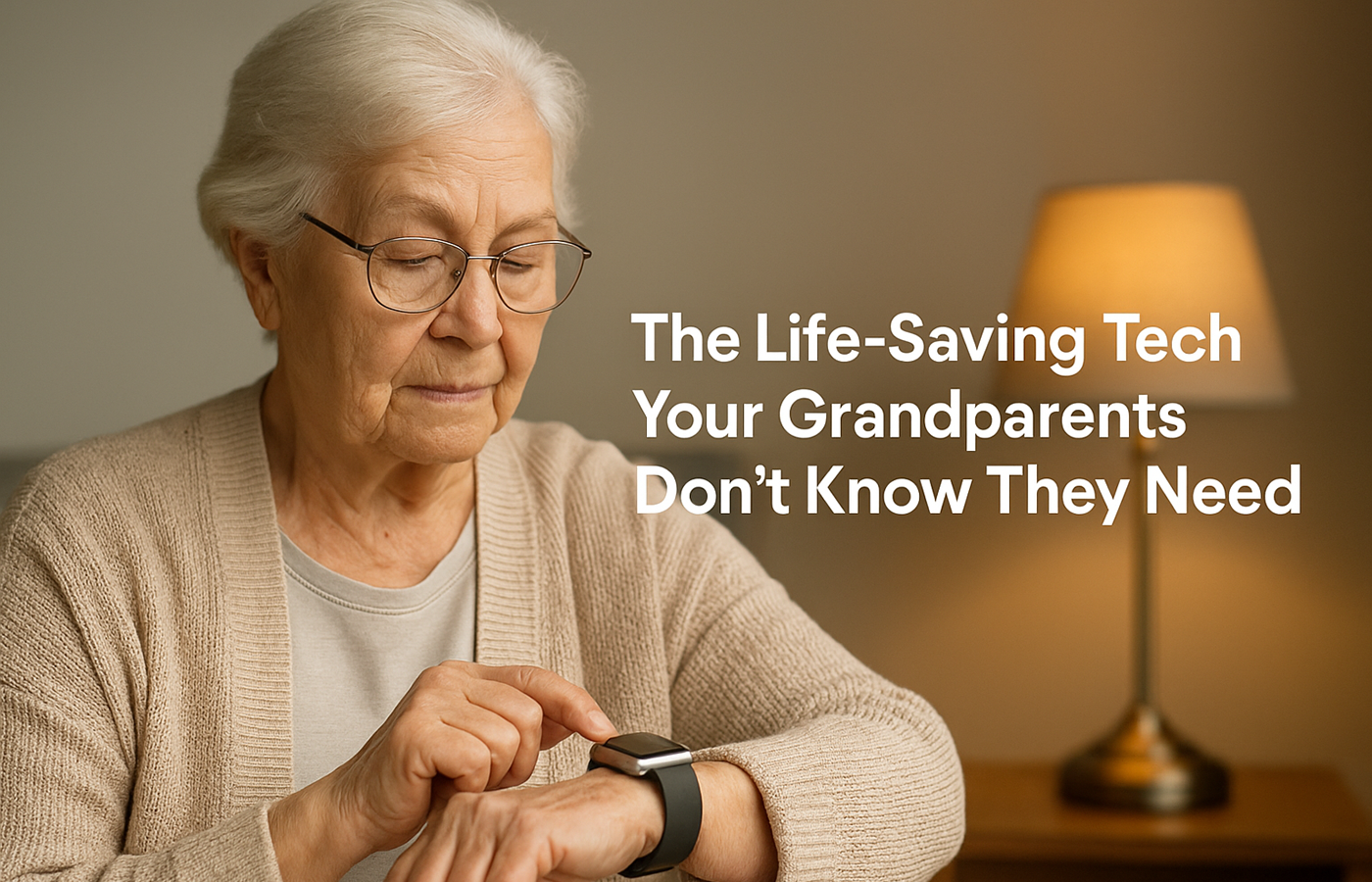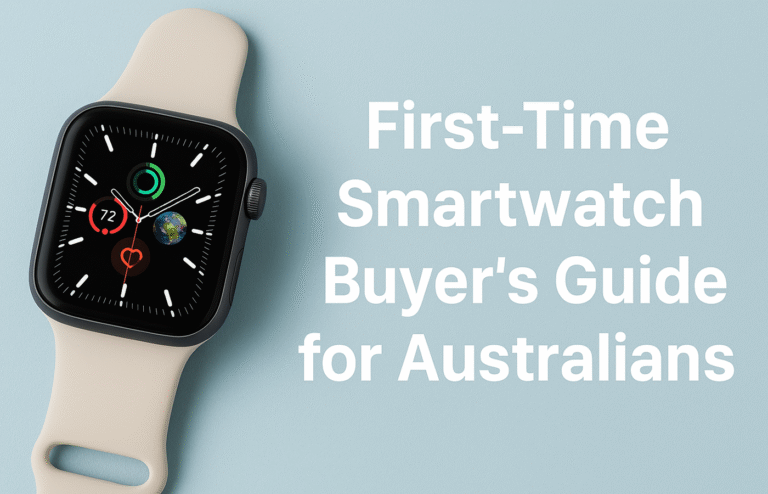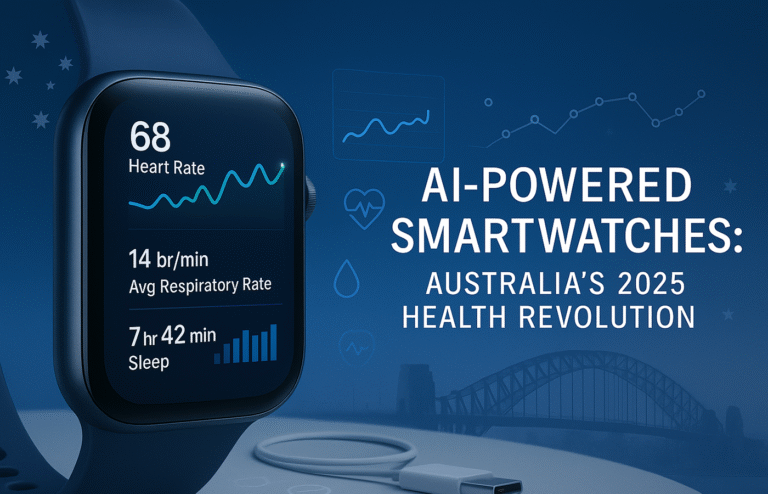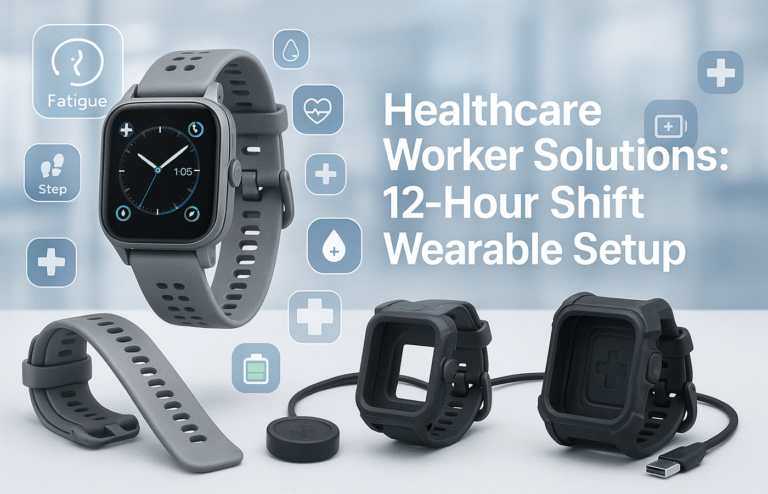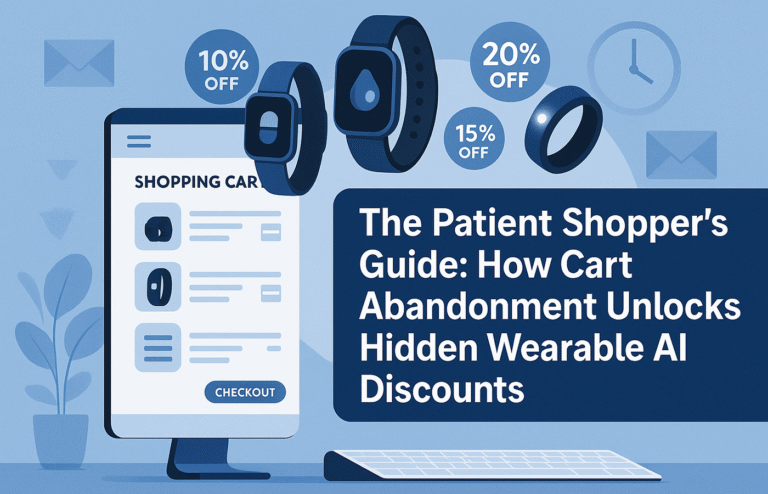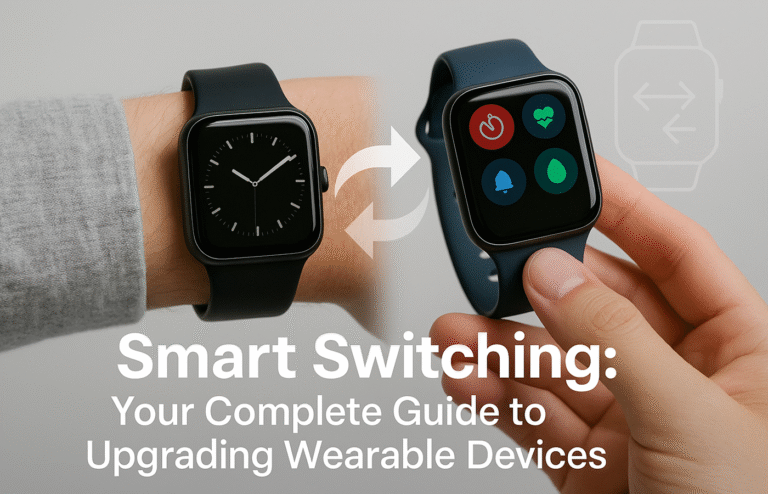Life-Saving Tech Your Grandparents Don’t Know They Need: Wearable Safety for Australian Seniors
Falls hospitalise someone aged 65+ every 36 minutes in Australia, whilst medication errors affect 30% of older adults. Wearable technology provides life-saving solutions many seniors don’t realise exist.
Critical Safety Features:
● Automatic fall detection calls 000 and provides GPS location when seniors can’t respond
● Medication reminders with dose tracking preventing dangerous missed or double doses
● Emergency SOS with one-button 000 calling and automatic family notifications
● Continuous heart rate monitoring detecting irregular rhythms like atrial fibrillation
Real Impact:
● 73-year-old Margaret’s garden fall automatically triggered paramedic response when she was too dazed to call
● 81-year-old father regained independence whilst family gained medication adherence monitoring peace of mind
Recommended Device:
● Apple Watch SE ($399 RRP): Excellent fall detection, family setup capabilities, comprehensive health monitoring, wide emergency feature ecosystem
The Life-Saving Tech Your Grandparents Don’t Know They Need
Picture this: it’s 3 AM, and your 78-year-old grandmother gets up to use the bathroom. In the darkness, she misjudges the step and takes a tumble. Thirty seconds later, her wrist starts buzzing with an alert: “It looks like you’ve taken a hard fall. Would you like me to call emergency services?” When she doesn’t respond—because she’s dazed and struggling to get up—the device automatically calls 000, provides her exact location to paramedics, and sends alerts to you and other family members.
This isn’t a scene from a sci-fi movie. It’s happening right now across Australia, thanks to wearable technology that many older adults don’t even know exists. Whilst your grandparents might dismiss smartwatches as “gadgets for young people,” these devices are quietly revolutionising safety and independence for seniors worldwide.
The Hidden Health Crisis Among Australian Seniors
Before diving into the technology, it’s crucial to understand why this matters so much. According to the Australian Institute of Health and Welfare, falls are the leading cause of injury-related hospitalisation among older Australians. Someone aged 65 or older is hospitalised due to a fall every 36 minutes in Australia. Even more concerning, many falls go undetected for hours, dramatically increasing the risk of serious complications.
Meanwhile, medication errors affect up to 30% of older adults, often because of complex medication schedules that become difficult to manage without support. Add to this the growing number of seniors living independently or alone, and you begin to see why families across Australia are desperately seeking solutions that provide both safety and peace of mind.
Fall Detection: The Guardian Angel on Their Wrist
The most remarkable feature of modern wearable technology for seniors is automatic fall detection. Devices like the Apple Watch SE ($399 RRP) and higher-end models use sophisticated sensors to detect when someone has taken a hard fall.
How It Actually Works
These devices don’t just detect any movement—they use advanced algorithms that combine data from multiple sensors to identify the specific signature of a fall. The watch monitors sudden changes in speed, altitude, and impact patterns that indicate a serious tumble rather than just sitting down quickly or dropping something.
When a fall is detected, the watch immediately displays an alert asking if the wearer is okay. If they tap “I’m OK,” nothing happens. However, if they don’t respond within 60 seconds—perhaps because they’re unconscious, disoriented, or unable to reach the device—the watch automatically calls emergency services and sends the person’s location via GPS.
Real Stories from Australian Families
Margaret Chen from Melbourne never thought she’d need “one of those computer watches.” At 73, she considered herself active and independent. However, after her daughter Emma insisted she try an Apple Watch SE, Margaret reluctantly agreed. Three months later, whilst tending to her garden, Margaret slipped on wet pavers and hit her head on a garden bed.
“I was conscious but quite dazed,” Margaret recalls. “I heard this voice from my wrist asking if I was okay, but I couldn’t quite focus enough to respond. Next thing I knew, paramedics were at my front door. The watch had called them automatically and given them my exact address.”
Margaret’s story isn’t unique. Across Australia, similar scenarios play out regularly. The technology works not just for dramatic falls, but for situations where seniors might be injured but unable to call for help themselves.
Medication Management: Never Miss a Dose Again
One of the most underappreciated features of smartwatches for seniors is medication reminder capabilities. Modern devices can be programmed with complex medication schedules, providing gentle vibrations and clear notifications when it’s time to take specific medications.
Beyond Simple Reminders
The Apple Watch SE and similar devices don’t just remind users to take medications—they can track whether doses were actually taken. Using the watch’s response system, seniors can confirm they’ve taken their medication, helping family members and healthcare providers monitor adherence without being intrusive.
For seniors managing multiple medications with different schedules, this feature alone can be life-changing. The watch can differentiate between morning blood pressure medication, afternoon pain relief, and evening sleep aids, providing specific reminders for each.
Family Peace of Mind
Perhaps equally important is the peace of mind this provides for adult children. Through family sharing features, designated family members can receive notifications if medications are missed, allowing for gentle check-ins without constant surveillance.
David Williams from Perth describes how this changed his relationship with his 81-year-old father: “Dad was getting confused with his medications, sometimes taking them twice or forgetting altogether. We were constantly worried but didn’t want to hover. Now his watch handles the reminders, and I only get notified if there’s actually a problem. It’s given Dad his independence back whilst giving us peace of mind.”
Emergency Communication: Help Is Always One Tap Away
Modern smartwatches transform how seniors can call for help in emergencies. Beyond automatic fall detection, these devices offer multiple ways to quickly summon assistance.
Emergency SOS Features
By pressing and holding the side button on an Apple Watch, users can immediately call emergency services. The watch automatically shares the user’s location and can even notify pre-selected emergency contacts. For seniors who might struggle with phone keypads during stressful situations, this one-button emergency system can be invaluable.
Check-In Features
Newer models include “Check In” functionality, where seniors can automatically notify family members when they arrive somewhere safely. This is particularly useful for seniors who live alone and want to let family know they’ve made it home from appointments or social activities.
Health Monitoring That Could Save Lives
Beyond emergency features, smartwatches provide continuous health monitoring that can detect problems before they become serious. The Apple Watch SE includes heart rate monitoring that can identify irregular rhythms, potentially catching conditions like atrial fibrillation before symptoms appear.
Blood Oxygen and Heart Health
Higher-end models offer blood oxygen monitoring and ECG capabilities. For seniors with heart conditions or respiratory issues, these features provide valuable data for healthcare providers and can alert users to seek medical attention when readings fall outside normal ranges.
Sleep Tracking for Better Health
Many seniors struggle with sleep issues but don’t realise how poor sleep affects their overall health. Smartwatches track sleep patterns, helping identify problems like sleep apnoea or frequent wake-ups that might indicate underlying health issues.
Addressing Common Concerns and Objections
Despite the clear benefits, many seniors resist adopting smartwatch technology due to common misconceptions and concerns.
“It’s Too Complicated”
Modern smartwatches designed for seniors focus on simplicity. The Apple Watch SE can be set up by family members and configured to show only essential information. Large, clear displays and simple interfaces make basic functions accessible even for those who aren’t tech-savvy.
Family members can manage most settings remotely, ensuring the watch is optimised for safety features without overwhelming the user with unnecessary complexity.
“I Don’t Want to Be Tracked”
Privacy concerns are valid, but modern devices allow families to find the right balance between safety and independence. Location sharing can be limited to emergency situations only, and family members can receive notifications about health and safety without accessing detailed activity data.
“It’s Too Expensive”
Whilst the initial cost might seem significant, consider the alternative costs of emergency room visits, extended hospital stays, or the need for more intensive care due to delayed emergency response. The Apple Watch SE at $399 RRP represents a fraction of the cost of a single hospital admission.
Furthermore, many private health insurers are beginning to offer rebates for wearable devices that promote preventive health monitoring, recognising their value in reducing long-term healthcare costs.
Choosing the Right Device for Your Family
Not all wearable devices are created equal when it comes to senior users. Here’s what to look for:
Best Fall Detection Smartwatches
Apple Watch SE ($399 RRP)
- Strengths: Industry-leading fall detection accuracy, easy family setup, comprehensive health monitoring
- Best for: Seniors with iPhone-using family members who can help with setup
Samsung Galaxy Watch 7 ($429 RRP)
- Detects unusual movements, vibrates with audible alarm for 60 seconds, automatically sends SOS if no response
- Best for: Android users wanting premium features with reliable fall detection
Google Pixel Watch 3 ($549 RRP)
- Contacts emergency services automatically after 60 seconds of non-response
- Note: Only works in select countries
Garmin Venu 3 ($649 RRP)
- “Incident Detection” sends location and alert to emergency contacts (doesn’t call emergency services)
- Best for: Active seniors prioritising fitness tracking and battery life
Budget & Specialised Options
Amazfit GTR 4 ($199 RRP)
- Rare budget-friendly option with fall detection support
- Limited apps but excellent battery life
Medical Alert Watches (from $179 + monthly fees)
- Bay Alarm Medical SOS: AI-powered fall detection reduces false alarms
- Medical Guardian MGMove: Simpler interface, connects to 24/7 monitoring centre
- Best for: Seniors wanting dedicated emergency monitoring over tech features
Key Takeaways
Apple Watch has arguably the best fall detection in 2024, while Samsung and Google offer strong Android alternatives. Medical alert watches provide dedicated emergency monitoring but require monthly subscriptions. Choose based on your phone ecosystem, budget, and whether you prefer direct emergency services or monitoring centre response. featuring larger buttons, simpler interfaces, and enhanced emergency features. These might cost more but offer features tailored specifically for senior needs.
Setting Up for Success
Family Involvement Is Key
The most successful smartwatch adoptions happen when adult children or grandchildren take responsibility for initial setup and ongoing support. This includes configuring emergency contacts, setting up medication reminders, and teaching basic functions.
Start Simple
Don’t overwhelm new users with every feature at once. Focus initially on basic functions like telling time and emergency features, gradually introducing additional capabilities as comfort levels increase.
Regular Check-ins
Schedule regular family sessions to review the device’s features and address any questions or concerns. This ongoing support ensures seniors feel confident using their device and maximises the safety benefits.
The Technology They Need, Whether They Know It or Not
The reality is that many Australian seniors could significantly benefit from wearable technology but simply don’t know these capabilities exist. They might associate smartwatches with young people checking social media, completely unaware that these devices can literally save lives.
The key is reframing the conversation. This isn’t about adopting new technology for its own sake—it’s about maintaining independence, ensuring safety, and providing peace of mind for the entire family.
A Gift That Keeps on Giving
Rather than viewing a smartwatch as an expensive gadget, consider it an investment in your family’s wellbeing. The device that prevents a single serious fall or medication error has already paid for itself many times over.
More importantly, these devices can help seniors maintain their independence longer by providing the safety net that allows them to continue living on their own terms whilst giving families confidence that help is always available when needed.
Starting the Conversation
If you’re considering wearable technology for an older family member, approach the conversation with empathy and focus on benefits rather than features. Instead of talking about “smartwatch capabilities,” discuss “safety features” and “health monitoring.” Share real stories like Margaret’s garden fall or David’s father’s medication management.
Most importantly, involve them in the decision-making process. Let them understand that this technology isn’t about taking away their independence—it’s about preserving it.
The life-saving technology your grandparents don’t know they need is sitting in electronics stores across Australia right now. The question isn’t whether they need it—it’s whether you’re ready to have the conversation that could literally save their life.

